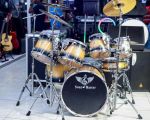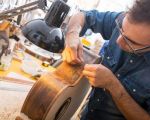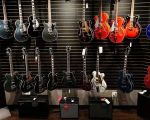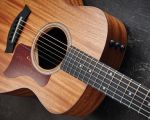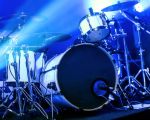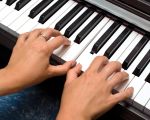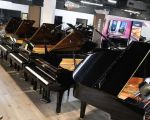Understanding the Instruments Behind Samba Music
Samba is one of the most iconic musical genres to come from Brazil, resonating with energy, rhythm, and passion. It's a genre that often fills the streets during festivals, particularly during the famous Rio Carnival. But what truly gives samba its pulse? The answer lies in the percussion instruments that drive its infectious rhythms. In this article, we’ll dive into the various instruments that make samba the vibrant genre it is today. Whether you’re new to samba or a seasoned listener, understanding these instruments adds a deeper layer to appreciating this musical tradition.
The Core of Samba: Percussion Instruments
The backbone of samba is undoubtedly its percussion instruments. Percussion defines the genre's rhythm and gives it that unmistakable energy. Let’s explore the key percussion instruments used in samba:
1. Surdo
The surdo is a large bass drum, central to samba’s rhythm section. This instrument sets the tempo, playing the heavy, foundational beats that provide structure to the samba ensemble. It’s typically played with a mallet and is responsible for the slower, deeper beats in the samba rhythm. Surdo players may also work in groups, each playing different patterns to add depth to the overall sound.
2. Caixa
The caixa, or snare drum, adds a sharp, crisp sound to samba’s rhythm. It’s often used in combination with other percussion instruments to highlight the syncopation and energy of samba music. When you hear the high-pitched sharp hits of the caixa, you’re listening to one of the signature sounds of samba’s intricate rhythms.
3. Tamborim
The tamborim is a small frame drum with a tight drumhead and is played with a stick. Its high-pitched, fast beats add a sharp, rhythmic texture to samba music, often in syncopated patterns that bring a lively energy to the song. The tamborim’s intricate rhythms are part of what makes samba such an engaging genre.
4. Agogô
The agogô consists of two or more metal bells of different sizes and pitches. It's struck with a stick and produces a melodic, ringing sound that carries through samba music. The agogô is responsible for adding a melodic line to the percussive foundation of samba. It’s an essential instrument in keeping the energy up and maintaining a melodic connection to the rhythms.
String Instruments: Adding Melodic Flavor to Samba
While samba is primarily driven by percussion, string instruments also play an important role in enriching its sound. These instruments often bring in harmonic and melodic depth, complementing the rhythm section:
5. Cavaquinho
The cavaquinho is a small string instrument similar to a ukulele, with four strings. It’s often used to play rapid, syncopated chords and melodies that create a harmonic layer over the percussion. The cavaquinho’s bright, cheerful sound is a staple in many samba compositions, especially in more traditional forms of the genre.
6. Guitar
In samba, the guitar is frequently used to accompany the rhythm section. Samba guitarists play a mix of chords and melodic lines, providing a harmonic foundation and often complementing the cavaquinho. It adds richness to the overall sound and contributes to samba’s laid-back yet vibrant atmosphere.
Brass and Woodwind Instruments in Samba
While percussion and strings dominate samba music, brass and woodwind instruments occasionally make appearances, adding even more layers to the genre. These instruments can bring a bold, bold presence to samba’s lively rhythms:
7. Trumpet
The trumpet is commonly featured in samba bands, particularly in samba schools during carnival parades. Its bright, brassy sound cuts through the ensemble, providing bursts of melody or accents during instrumental breaks. The trumpet’s role is often to create energy and serve as an exciting focal point in larger samba compositions.
8. Saxophone
Though less common than the trumpet, the saxophone is occasionally used in samba, particularly in more modern styles or jazz-influenced samba. Its warm, smooth tone contrasts beautifully with the sharp percussion, creating a dynamic balance in samba arrangements. The saxophone can either play in harmony with other instruments or take center stage during solos.
Traditional Samba Ensembles and Their Performance
The ensemble of musicians and performers in a samba band creates the energy and excitement that defines samba music. Traditional samba performances feature a blend of these instruments, often accompanied by dancers and singers who interact with the audience. A typical samba band might consist of several percussionists playing surdos, caixas, tamborins, and agogôs, alongside guitarists, cavaquinho players, and sometimes brass players.
Why Understanding Samba Instruments Enhances Your Experience
Understanding the instruments used in samba enhances your listening experience. It allows you to pick out the unique sounds and rhythms that create samba’s dynamic, energetic, and lively music. Whether you’re attending a carnival, listening to a samba ensemble, or dancing to its rhythm, knowing the instruments involved can deepen your appreciation for this rich and vibrant genre.
If you’re interested in exploring samba more, or even participating in learning these instruments yourself, there are many educational resources, courses, and live events dedicated to samba. Let yourself be immersed in the culture and sounds of samba by exploring its instruments, and see how they come together to create one of the most exciting musical genres in the world.
SEO Title: Instruments Used in Samba Music – Discover the Heartbeat of Brazilian Rhythms SEO Keywords: samba music instruments, samba rhythm, Brazilian samba percussion, samba music, samba instrumentation SEO Description: Explore the essential instruments that define samba music, from powerful percussion to melodic strings. Learn how they come together to create the energetic rhythms of Brazil's iconic genre.